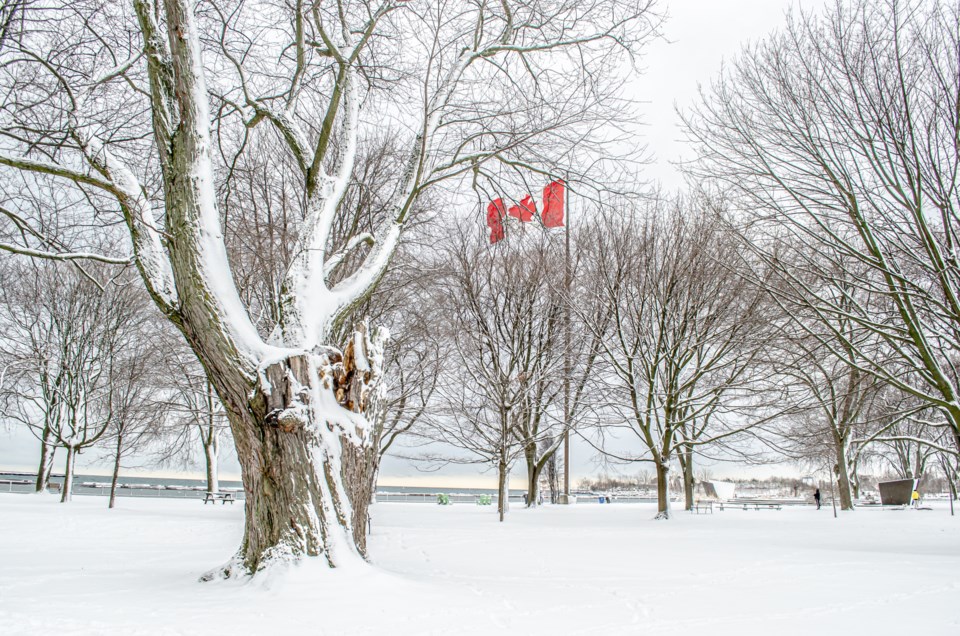With widespread snowfall and winter storm warnings in effect across Ontario, a 'highly impactful' system is expected to bring 15-35+ cm of snow through Thursday.
As residents prepare for the changing weather conditions, staying warm, dry, and safe is essential. This guide outlines key winter preparedness tips to help you navigate the season safely.
Stay Dry to Stay Warm
One of the biggest risks in winter is getting wet, as moisture increases the rate at which your body loses heat. Waterproof boots and mittens are essential for keeping dry, and it's crucial to avoid walking on ice or through slush. Even shallow water can soak your feet and lower your body temperature significantly.
Dress in Layers for Maximum Warmth
Layering is the best way to regulate body temperature in winter. When engaging in outdoor activities like skiing, snowshoeing, or skating, your body generates heat, and excess heat can lead to sweating. However, sweat can quickly become a problem, as damp skin loses heat rapidly.
-
Base Layer: Choose moisture-wicking fabrics like polypropylene or silk.
-
Mid Layer: Opt for warm materials like wool that retain heat even when damp.
-
Outer Shell: Wear a windproof and waterproof shell to protect against the elements.
Dressing in layers applies to your whole body. Long johns and snow pants help keep your legs warm, while glove liners inside mittens offer extra insulation. Always keep extra layers handy in case you need to warm up.

Essential Winter Accessories
Proper accessories can make all the difference in staying warm. A thick hat helps retain body heat, while mittens provide better insulation than gloves. Footwear is just as important—boots with felt liners offer extra warmth, and having spare socks and liners can be a lifesaver if your feet get wet.
Slippery conditions are a major hazard in winter, so consider investing in ice cleats or crampons for added traction when walking on packed snow or ice.
Monitor the Wind Chill
Cold temperatures are one challenge, but wind chill can make conditions even harsher. Wind speeds up heat loss, meaning the actual temperature may feel much colder than what’s shown on the thermometer. Always check the forecast before heading out and dress accordingly.
Stay Hydrated and Fuelled
Your body burns more calories in the cold, so fuelling it properly is essential. Carry calorie-dense snacks like trail mix to maintain energy levels. Hydration is just as crucial—cold air can be very drying. Keep a water bottle handy, but avoid caffeine and alcohol, which can contribute to dehydration.

Know Your Limits
Outdoor activities are beneficial for both physical and mental health, but it’s important to pace yourself. If it’s your first time out this season, start with a short activity and gradually increase intensity. Overexertion can lead to fatigue and increase the risk of injury or getting lost.
Recognizing Emergency Signs
Hypothermia and frostbite are serious risks in extreme cold. Watch for these warning signs and seek medical help immediately if necessary:
Signs of Hypothermia:
-
Confusion or difficulty concentrating
-
Slow, shallow breathing
-
Weak pulse
-
Loss of consciousness
Signs of Frostbite:
-
Pale, waxy skin on fingers, ears, or toes
-
Numbness or loss of sensation
If you or someone else shows signs of hypothermia, move to a warm location, add dry layers, and seek medical assistance immediately. For frostbite, avoid rubbing the affected area and warm up gradually.
Embrace the Season Safely
Winter offers plenty of opportunities for outdoor fun, from skiing to scenic walks. By staying dry, dressing in layers, monitoring weather conditions, and knowing your limits, you can safely enjoy all that the season has to offer. Be prepared, stay safe, and don’t hesitate to call for help in an emergency.
With the right precautions, you can make the most of Ontario’s winter wonderland while staying warm and protected.




